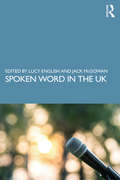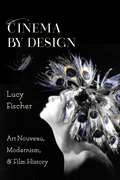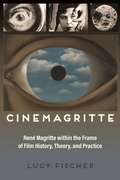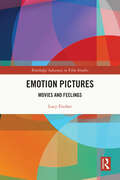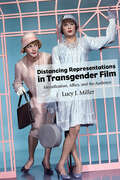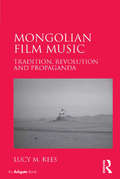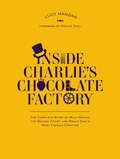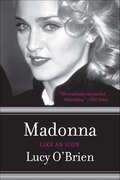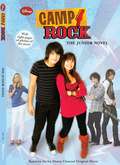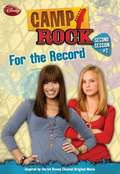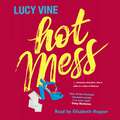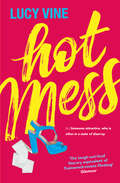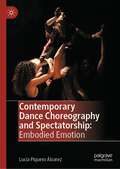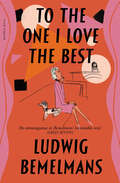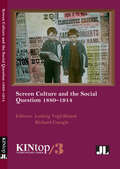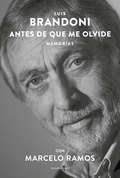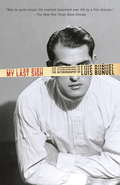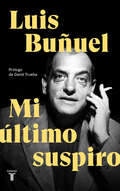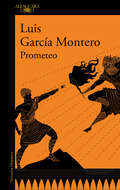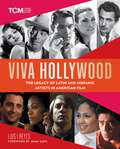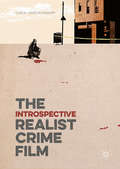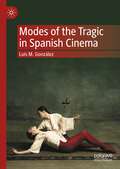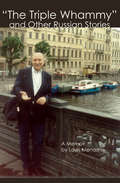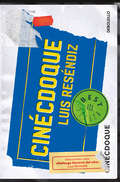- Table View
- List View
Spoken Word in the UK
by Lucy EnglishSpoken Word in the UK is a comprehensive and in-depth introduction to spoken word performance in the UK – its origins and development, its performers and audiences, and the vast array of different styles and characteristics that make it unique. Drawing together a wide range of authors including scholars, critics, and practitioners, each chapter gives a new perspective on performance poetics. The six sections of the book cover the essential elements of understanding the form and discuss how this key aspect of contemporary performance can be analysed stylistically, how its development fits into the context of performance in the UK, the ways in which its performers reach and engage with their audiences, and its place in the education system. Each chapter is a case study of one key aspect, example, or context of spoken word performance, combining to make the most wide-ranging account of this form of performance currently available. This is a crucial and ground-breaking companion for those studying or teaching spoken word performance, as well as scholars and researchers across the fields of theatre and performance studies, literary studies, and cultural studies.
Cinema by Design: Art Nouveau, Modernism, and Film History (Film and Culture Series)
by Lucy FischerArt Nouveau thrived from the late 1890s through the First World War. The international design movement reveled in curvilinear forms and both playful and macabre visions and had a deep impact on cinematic art direction, costuming, gender representation, genre, and theme. Though historians have long dismissed Art Nouveau as a decadent cultural mode, its tremendous afterlife in cinema proves otherwise. In Cinema by Design, Lucy Fischer traces Art Nouveau's long history in films from various decades and global locales, appreciating the movement's enduring avant-garde aesthetics and dynamic ideology. Fischer begins with the portrayal of women and nature in the magical "trick films" of the Spanish director Segundo de Chomón; the elite dress and décor design choices in Cecil B. DeMille's The Affairs of Anatol (1921); and the mise-en-scène of fantasy in Raoul Walsh's The Thief of Bagdad (1924). Reading Salome (1923), Fischer shows how the cinema offered an engaging frame for adapting the risqué works of Oscar Wilde and Aubrey Beardsley. Moving to the modern era, Fischer focuses on a series of dramatic films, including Michelangelo Antonioni's The Passenger (1975), that make creative use of the architecture of Antoni Gaudí; and several European works of horror—The Abominable Dr. Phibes (1971), Deep Red (1975), and The Strange Color of Your Body's Tears (2013)—in which Art Nouveau architecture and narrative supply unique resonances in scenes of terror. In later chapters, she examines films like Klimt (2006) that portray the style in relation to the art world and ends by discussing the Art Nouveau revival in 1960s cinema. Fischer's analysis brings into focus the partnership between Art Nouveau's fascination with the illogical and the unconventional and filmmakers' desire to upend viewers' perception of the world. Her work explains why an art movement embedded in modernist sensibilities can flourish in contemporary film through its visions of nature, gender, sexuality, and the exotic.
Cinemagritte: René Magritte within the Frame of Film History, Theory, and Practice (Contemporary Approaches to Film and Media Series)
by Lucy FischerCinemagritte: René Magritte within the Frame of Film History, Theory, and Practice investigates the dynamic relationship between the Surrealist modernist artist René Magritte (1898–1967) and the cinema—a topic largely ignored in the annals of film and art criticism. Magritte once said that he used cinema as "a trampoline for the imagination," but here author Lucy Fischer reverses that process by using Magritte’s work as a stimulus for an imaginative examination of film. While Fischer considers direct influences of film on Magritte and Magritte on film, she concentrates primarily on "resonances" of Magritte’s work in international cinema—both fiction and documentary, mainstream and experimental. These resonances exist for several reasons. First, Magritte was a lover of cinema and created works as homages to the medium, such as Blue Cinema (1925), which immortalized his childhood movie theater. Second, Magritte’s style, though dependent on bizarre juxtapositions, was characterized by surface realism—which ties it to the nature of the photographic and cinematic image. Third, Magritte shares with film a focus on certain significant concepts: the frame, voyeurism, illusionism, the relation between word and image, the face, montage, variable scale, and flexible point of view. Additionally, the volume explores art documentaries concerning Magritte as well as the artist’s whimsical amateur "home movies," made with his wife, Georgette, friends, and Belgian Surrealist associates. The monograph is richly illustrated with images of Magritte’s oeuvre as well as film stills from such diverse works as The Eternal Sunshine of the Spotless Mind, Eyes Without a Face, American Splendor, The Blood of a Poet, Zorns Lemma, The Island of Dr. Moreau, The Draughtsman’s Contract, and many more. Cinemagritte brings a novel and creative approach to the work of Magritte and both film and art criticism. Students, scholars, and fans of art history and film will enjoy this thoughtful marriage of the two.
Emotion Pictures: Movies and Feelings (Routledge Advances in Film Studies)
by Lucy FischerThis book investigates a group of exceptional films that single-mindedly consider one particular emotion – be it pity, lust, grief, or anxiety – to examine cinematic emotion in depth. Drawing on philosophical and psychological approaches, Fischer’s unique analysis offers unparalleled case studies for comprehending emotion in the movies. The book provides the reader with an opportunity to contemplate what notion of a particular emotion is advanced onscreen; to describe how the unique tools and aesthetics of cinema are utilized to do so; to place such representations in dialogue with film theory as well as philosophical and psychological commentary; and to illustrate the important dichotomy between filmic portrayals and audience response. Beyond film and media scholars and students, this book will have resonance for academics and practitioners in several fields of psychology, including social work, psychiatry, and therapy.
Distancing Representations in Transgender Film: Identification, Affect, and the Audience (SUNY series, Horizons of Cinema)
by Lucy J. MillerDistancing Representations in Transgender Film explores the representation of transgender identity in several important cinema genres: comedies, horror films, suspense thrillers, and dramas. In a critique that is both deeply personal and theoretically sophisticated, Lucy J. Miller examines how these representations are often narratively and visually constructed to prompt emotions of ridicule, fear, disgust, and sympathy from a cisgender audience. Created by and for cisgender people, these films do not accurately represent transgender people's experiences, and the emotions they inspire serve to distance cisgender audience members from the transgender people they encounter in their day-to-day lives. By helping to increase the distance between cisgender and transgender people, Miller argues, these films make it more difficult for cisgender people to understand the experiences of transgender people and for transgender people to fully participate in public life. The book concludes with suggestions for improving transgender representation in film.
Mongolian Film Music: Tradition, Revolution and Propaganda
by Lucy M. ReesIn 1936 the Mongolian socialist government decreed the establishment of a film industry with the principal aim of disseminating propaganda to the largely nomadic population. The government sent promising young rural Mongolian musicians to Soviet conservatoires to be trained formally as composers. On their return they utilised their traditional Mongolian musical backgrounds and the musical skills learned during their studies to compose scores to the 167 propaganda films produced by the state film studio between 1938 and 1990. Lucy M. Rees provides an overview of the rich mosaic of music genres that appeared in these film soundtracks, including symphonic music influenced by Western art music, modified forms of Mongolian traditional music, and a new genre known as ’professional music’ that combined both symphonic and Mongolian traditional characteristics. Case studies of key composers and film scores are presented, demonstrating the influence of cultural policy on film music and showing how film scores complemented the ideological message of the films. There are discussions of films that celebrate the 1921 Revolution that led to Mongolia becoming a socialist nation, those that foreshadowed the 1990 Democratic Revolution that drew the socialist era to a close, and the diverse range of films and scores produced after 1990 in the aftermath of the socialist regime.
Inside Charlie's Chocolate Factory
by Lucy ManganCelebrate the 50 years of Charlie and the Chocolate Factory with this scrumdiddlyumptious book about the iconic novel and author! Inside Charlie's Chocolate Factory explores the unique appeal and lasting cultural impact of Roald Dahl's beloved classic. This non-fiction book looks at the development of the original story and charaters, its social history, and the varying film and stage adaptations. With never-before-seen material from the archives, full-color photos and illustrations throughout, and quotes from Roald Dahl enthusiasts this gorgeously produced gift book is a great way for fans to celebrate Charlie, Wonka, and Roald Dahl!
Madonna: Like an Icon
by Lucy O'BrienMaterial Girl . . . Immaculate sexpot . . . Superstar . . . Mother . . . Kabbalah enthusiast . . . For three decades she has defied categorization. . . . She remains one of our greatest living pop icons.Here is the groundbreaking biography that finally solves the mystery at the heart of Madonna's chameleonlike existence. Drawing upon scores of candid interviews with producers, musicians, collaborators, lovers, and friends, Lucy O'Brien's Madonna: Like an Icon explores the complex personality and legendary drive that have made Madonna the most famous female pop artist of our time. From her mother's premature death to Madonna's dynamic arrival on the New York club scene, from "Like a Virgin" to Evita and beyond, every stage of this dazzling star's life and career is brilliantly illuminated—the stereotypes deconstructed, the lies exposed, the artist examined, the legend celebrated.
Camp Rock: The Junior Novel
by Lucy RugglesMitchie, a stage-shy fourteen-year-old, loves to sing. So when her mom takes a job as a cook at a summer camp for aspiring rock stars, Mitchie is thrilled. But to get in with Tess, the most popular camper, Mitchie pretends her mother is high up in the music biz. Will her act put her singing in jeopardy? Or will all the high-volume drama make for a summer to remember?
For the Record (Camp Rock #2)
by Lucy RugglesWhen a record executive arrives at Camp Rock, Tess is determined to outshine everyone and land the recording deal of a lifetime. The only problem? The record executive isn't at camp for the singing, he´s there for the food! Now Tess will have to get help from the unlikeliest of people--Mitchie.
Hot Mess: Bridget Jones for a new generation
by Lucy VineHot Mess [n.] - someone attractive, who is often in disarray.Have you ever shown up to Sunday brunch still smelling of Saturday night?Chosen bed, Netflix and pizza over human contact?Stayed in your mould-ridden flat because it's cheap?Meet your spirit animal, Ellie Knight. Her life isn't turning out exactly as she planned. She hates her job, her friends are coupling up and settling down, and her flatmates are just plain weird.Some people might say she's a hot mess but who really has their sh*t together anyway? For fans of Fleabag and Girls, this is a fresh and funny coming-of-age story with a single-girl heroine that will speak to millennials everywhere.Everyone is talking about Hot Mess - the hilarious laugh-out-loud Bridget Jones for a new generation:'More lifestyle-affirming than Bridget Jones' Sarah Knight, author of The Life Changing Magic of Not Giving a F*ck'If you love dirty jokes, dating horror stories and hilarious dialogue, this book is for you' Emma Gannon, author and podcast host of Ctrl Alt Delete'I laughed and sighed with recognition as I turned every page' Daisy Buchanan, author of How To Be a Grown-UpRead by Elisabeth Hopper(p) Orion Publishing Group 2017
Hot Mess: The utterly hilarious and relatable Number One eBook bestseller
by Lucy VineThe eBook Number One bestseller The hottest book of the summer. A sassy, laugh out loud beach read everyone is talking about *****Hot Mess [n.] - someone attractive, who is often in disarray.Have you ever shown up to Sunday brunch still smelling of Saturday night?Chosen bed, Netflix and pizza over human contact?Stayed in your mould-ridden flat because it's cheap?Meet your spirit animal, Ellie Knight. Her life isn't turning out exactly as she planned. She hates her job, her friends are coupling up and settling down, and her flatmates are just plain weird.Some people might say she's a hot mess but who really has their sh*t together anyway? For fans of Fleabag and Girls, this is a fresh and funny coming-of-age story with a single-girl heroine that will speak to millennials everywhere.*****'The laugh-out-loud literary equivalent of Trainwreck-meets-Fleabag' Glamour'A breath of fresh air, deftly subverting some of chick lit's biggest clichés' Stylist'More lifestyle-affirming than Bridget Jones' Sarah Knight, author of The Life Changing Magic of Not Giving a F*ck'If you love dirty jokes, dating horror stories and hilarious dialogue, this book is for you' Emma Gannon, author and podcast host of Ctrl Alt Delete'I laughed and sighed with recognition as I turned every page' Daisy Buchanan, author of How To Be a Grown-Up
Contemporary Dance Choreography and Spectatorship: Embodied Emotion
by Lucía Piquero ÁlvarezThis book offers an approach which unites choreographic and spectatorial perspectives, and argues for dance itself—its materials, its structures—as a medium of emotional communication. Contemporary dance often seems to contend with issues of understanding, regularly being “read” in “languages” which alienate it. Even if emotion seems a significant part of people’s engagement with dance, its workings are often surrounded by an air of mysticism. Engaging with these issues, this study investigates the experience of emotion in Euro-American contemporary dance theatre. It questions its dependence on the artist’s personal emotions, and the assumption that it is mediated by representational meaning. Instead, this book proposes that the emotional import of dance emerges from an interplay between perceptual properties and symbolic elements in an embodied affective cognitive experience. This experience includes the background of the spectator as well as the context of work, choreographer, performer(s) and other creative agents.
To the One I Love the Best
by Ludwig BemelmansA witty and charming account of the wildly entertaining Elsie de Wolfe in 1950s Hollywood, recounted by her dear friend, the beloved creator of MadelineLudwig Bemelmans&’ charming intergenerational friendship with the late-in-life &“First Lady of Interior Decoration&” provides an enormously enjoyable nostalgia trip to the sun-soaked glamour of Los Angeles, where de Wolfe surrounded herself with classic movie stars and a luminous parade of life's oddities. With hilarity and mischief that de Wolfe would no doubt approve, To the One I Love the Best lifts the curtain on 1950s Hollywood--a bygone world of extravagance and eccentricity, where the parties are held in circus tents and populated by ravishing movie stars. Bemelmans, who was working at MGM, had originally come to the California home of de Wolfe just for cocktails but by the end of the night, he was firmly established as a member of the family: given a bedroom in their sumptuous house, invitations to the most outrageous parties in Hollywood, and the friendship of the larger-than-life woman known to her closest friends simply as 'Mother'. To the One I Love the Best (which refers to de Wolfe&’s dog) is a touching tribute to a fabulously funny woman and an American icon. Be pretty if you can, be witty if you must, but be gracious if it kills you. - Elsie de Wolfe
Screen Culture and the Social Question, 1880–1914 (KINtop #3)
by Ludwig Vogl-Bienek and Richard CrangleEssays exploring how reformers and charities used the “magic lantern” to raise public awareness of poverty.Public performances using the magic or optical lantern became a prominent part of the social fabric of the late nineteenth century. Drawing on a rich variety of primary sources, Screen Culture and the Social Question, 1880-1914 investigates how the magic lantern and cinematograph, used at public lectures, church services, and electoral campaigns, became agents of social change.The essays examine how social reformers and charitable organizations used the “art of projection” to raise public awareness of the living conditions of the poor and the destitute, as they argued for reform and encouraged audiences to work to better their lot and that of others.
Antes de que me olvide: Memorias con Marcelo Ramos
by Luis BrandoniLa autobiografía de Luis Brandoni, uno de los actores más reconocidos de la Argentina, en un relato que entrevera su historia personal desde sus orígenes hasta la actualidad, con su larga trayectoria en cine, teatro y televisión, y una intensa carrera política que va de su activa participación gremial y su persecución durante la dictadura a su involucramiento como funcionario público por el radicalismo. «Un gran actor; de una especie, a mi juicio, en extinción. [De] los que, contando con instrumentos actorales que les permiten transitar con excelencia por gran parte del teatro "culto", tienen una especial capacidad de observación y reproducción de rasgos y conductas de la tipología popular. Y a los que ese don extraordinario los convierte en artistas adorados por los sectores masivos del público. Un público que los vive como cómplices, como parte de su familia».Sergio Renán «Este hombre que había logrado hacerme llorar de risa en un programa de televisión, y de emoción en una película, [ha conseguido hacer] las dos cosas en una misma obra. Beto logra el truco del mago, ese de arrancarte carcajadas y ponerte un nudo en la garganta en un lapso de segundos. Pero hay otra dimensión insoslayable de Beto. Su compromiso con el país, su labor política. [...] De eso habla, y mucho, en estas memorias. Es todo apasionante. Este libro, que es también la historia del teatro y el país de los últimos sesenta años, es un libro para aprender, para regocijarse, para emocionarse. Es para amantes del teatro y amantes del compromiso. Es el backstage de las últimas seis décadas de nuestro país. En él van a poder ver a uno de sus protagonistas, cabeza de compañía, actor de carácter y creador. Un actor, un político y un hombre como muy, muy pocos. "Aprovechenló", ya no hacen gente así».Juan José Campanella A los ochenta años, y con sesenta de trayectoria en cine, teatro y televisión, Luis Brandoni, uno de los actores más famosos de Argentina, nos ofrece por primera vez una mirada precisa, sentida y detallada sobre su vida y su carrera. El relato de su origen en Dock Sud y su vida familiar, el servicio militar y, en orden cronológico: La Comedia Nacional; su experiencia sobre tablas (acá y en el mundo) y en pantalla, de Oscar Viale a Jean Genet y de Luisa Vehil y Migré a Campanella, un vistazo a todas sus películas (de Renán a Cohn-Duprat y Borensztein) y su inclaudicable compromiso político -la pelea por los canales de televisión abierta, la dictadura y el exilio, la experiencia de Teatro Abierto-; y un balance personal que se complementa con una exhaustiva cronología de su obra; la lista de los reconocimientos que ha merecido y un completo índice onomástico que, más allá de su carácter práctico, da cuenta del infinito universo artístico y social al que pertenece.
My Last Sigh
by Luis BunuelA provocative memoir from Luis Buñuel, the Academy Award winning creator of some of modern cinema's most important films, from Un Chien Andalou to The Discreet Charm of the Bourgeoisie.Luis Buñuel's films have the power to shock, inspire, and reinvent our world. Now, in a memoir that carries all the surrealism and subversion of his cinema, Buñuel turns his artistic gaze inward. In swift and generous prose, Buñuel traces the surprising contours of his life, from the Good Friday drumbeats of his childhood to the dreams that inspired his most famous films to his turbulent friendships with Federico García Lorca and Salvador Dalí. His personal narratives also encompass the pressing political issues of his time, many of which still haunt us today--the specter of fascism, the culture wars, the nuclear bomb. Filled with film trivia, framed by Buñuel's intellect and wit, this is essential reading for fans of cinema and for anyone who has ever wanted to see the world through a surrealist's eyes.
Mi último suspiro
by Luis BuñuelUn libro de memorias canónico, fruto de dieciocho años de trabajo y de la amistad entre el genial cineasta y Jean-Claude Carrière. Estas memorias son el fruto de dieciocho años de trabajo y amistad entre Luis Buñuel y Jean-Claude Carrière. Juntos hicieron seis obras maestras del cine: Diario de una camarera, Belle de jour, La Vía Láctea, El discreto encanto de la burguesía, El fantasma de la libertad y Ese oscuro objeto del deseo. El libro nació espontáneamente de sus entrevistas en España y México durante los intervalos de las sesiones de trabajo; el uno evocando sus recuerdos y el otro recogiendo las palabras del amigo y anotándolas. Mi último suspiro recoge la voz y las propias palabras de Luis Buñuel, y nos da una particular visión del genial cineasta y de su mundo más personal. Esta edición conmemora el trigésimo aniversario de su primera edición francesa y española. Reseña:«Buñuel es el portador de una conciencia poética.»Andrei Tarkovski
The Films of Arturo Ripstein: The Sinister Gaze of the World
by Manuel Gutiérrez Silva Luis Duno GottbergThis book gathers eleven scholarly contributions dedicated to the work of Mexican director Arturo Ripstein. The collection, the first of its kind, constitutes a sustained critical engagement with the twenty-nine films made by this highly acclaimed yet under-studied filmmaker. The eleven essays included come from scholars whose work stands at the intersection of the fields of Latin American and Mexican Film Studies, Gender and Queer Studies, Cultural Studies, History and Literary studies. Ripstein’s films, often scripted by his long-time collaborator, Paz Alicia Garciadiego, represent an unprecedented achievement in Mexican and Latin American film. Unlike many of his contemporaries, Ripstein has successfully maintained a prolific output unmatched by any director in the region. Though several book-length studies have been published in Spanish, French, German, and Greek, to date no analogue exists in English. This volume provides a much-needed contribution to the field.
Prometeo
by Luis García MonteroEL NUEVO LIBRO DE LUIS GARCÍA MONTERO UN MITO CON PLENA VIGENCIA, EL DEL DESAFÍO A LOS DIOSES.UN CANTO DE ESPERANZA EN EL SER HUMANO. «Es uno de los pocos destinados a la letra grande de la historia de la literatura».José-Carlos Mainer «Admiro mucho su capacidad de seguir batallando, de no rendirse en la lucha por cambiar las cosas sin haber caído en la rabia, el resentimiento, la frustración».Juan Diego Botto «Se acercó hasta la hoguera, sostuvo la mirada contra el fuego y afirmó lentamente, una vez más: esperemos aún, sigamos todavía». Vivimos tiempos, como afirma Luis García Montero en este libro, en los que la conciencia del presente nos devuelve a la historia del pasado para fortalecernos en el deseo de resistencia. Y es éste el motivo que ha llevado al autor, a lo largo de los últimos años, a reflexionar desde el ensayo, la poesía y el teatro sobre la actualidad política y social del mito de Prometeo, ese titán que osó enfrentarse a los dioses y les robó el fuego para entregárselo a los mortales y regalarles con él la libertad. Esta obra reúne los textos de García Montero centrados en la figura rebelde de Prometeo. La pieza central —llevada a la escena por José Carlos Plaza en 2019 en el Festival de Teatro Clásico de Mérida— propone un diálogo intergeneracional entre dos Prometeos: el joven, que duda del acierto de su rebelión dado el castigo que trajo consigo, y el anciano, que desde su experiencia le muestra el triunfo que conlleva siempre buscar el bien común. En definitiva, Prometeo es un canto esperanzador sobre la humanidad, una lúcida reflexión en torno al poder de la solidaridad, la justicia y la libertad. Aquí, el mito, transformado a la luz de esta existencia convulsa e hiperconectada en la que estamos inmersos, sigue alentándonos hoy a sentarnos juntos alrededor del fuego para contarnos nuestro propio pasado y discutir sobre el futuro que merecemos. La crítica ha dicho:«Es uno de los pocos destinados a la letra grande de la historia de la literatura».José-Carlos Mainer «Parece capaz de contarnos, y de qué manera, lo que habíamos olvidado que sabíamos de nosotros mismos».Joaquín Sabina «Tono sostenido, poderosa nostalgia, emoción delicada que no alza la voz, poesía escueta, ceñida...».Octavio Paz «Admiro mucho su capacidad de seguir batallando, de no rendirse en la lucha por cambiar las cosas sin haber caído en la rabia, el resentimiento, la frustración».Juan Diego Botto «El mayor referente poético de España, cabeza de generación».Carmen Rengel, El HuffPost «García Montero ha defendido unos objetivos de invariable lucidez y ha logrado que su poesía remita con rigor minucioso a sus ideas estéticas. Y eso lo ha aproximado a lo que suele identificarse con un joven maestro».José Manuel Caballero Bonald «Siempre ha optado por ser testigo de su tiempo y su poesía ha sido el reflejo de sus inquietudes».Carmen Sigüenza, Agencia EFE
Viva Hollywood: The Legacy of Latin and Hispanic Artists in American Film (Turner Classic Movies)
by Luis I. ReyesThrough an authoritative narrative and lavish photography, this is an in-depth history of the stars, films, achievements, and influence of the Hispanic and Latino community in Hollywood history from the silent era to the present day.Overcoming obstacles of prejudice, ignorance, and stereotyping, this group has given the world some of its most beloved stars and told some of its most indelible stories. Viva Hollywood examines the stars in front of the screen as well as the people behind-the-scenes who have created a rich legacy across more than 100 years.The role of Latin women on screen is explored through the professional lives of Dolores Del Rio, Rita Hayworth, Raquel Welch, Salma Hayek, Penélope Cruz, and many more. The book covers the films and careers of actors ranging from silent screen idol Antonio Moreno, to international Oscar-winning star Anthony Quinn, to Andy Garcia and Antonio Banderas. A spotlight is also given to craftspeople who elevated the medium with their artistry—visionaries like cinematographer John Alonzo, Citizen Kane scenic artist Mario Larrinaga, and Oscar-winning makeup artist Beatrice de Alba.The stories of these and many others begins through a lens of stereotyped on-screen personas of Latin Lovers, sexy spitfires, banditos, and gangsters. World War II saw an embrace of Latin culture as the &“Good Neighbor Policy&” made it both fashionable and patriotic to feature stories set south of the border. Social problem films of the 1950s and '60s brought fresh looks at the community, with performances like Katy Jurado in High Noon, the cast of West Side Story, and racial inequality depicted in George Stevens's Giant. Civil Rights, the Chicano Movement, and the work of activist actors such as Ricardo Montalban and Edward James Olmos influenced further change in Hollywood in subsequent decades and paved the way for modern times and stars the likes of Jennifer Lopez and Lin-Manuel Miranda.Illustrated by more than 200 full-color and black-and-white images, Viva Hollywood is both a sweeping history and a celebration of the legacy of some of the greatest art and artists ever captured on screen.
The Introspective Realist Crime Film
by Luis M. García-MainarThis book explores the formal and thematic conventions of crime film, the contexts in which these have flourished and their links with the social issues of a globalized world. The crime film has traditionally been identified with suspense, a heterogeneous aesthetic and a tacit social mind. However, a good number of the crime films produced since the early 2000s have shifted their focus from action or suspense and towards melodrama in narratives that highlight the social dimension of crime, intensify their realist aesthetics and dwell on subjectivity. With the 1940s wave of Hollywood semi-documentary crime films and 1970s generic revisionism as antecedents, these crime films find inspiration in Hollywood cinema and constitute a transnational trend. With a close look at Steven Soderbergh's Traffic (2000), David Fincher's Zodiac (2007), Jacques Audiard's Un prophète (2009) and Tomas Alfredson's Tinker Tailor Soldier Spy (2011), this book sets out the stylistic and thematic conventions, contexts and cultural significance of a new transnational trend in crime film.
Modes of the Tragic in Spanish Cinema
by Luis M. GonzálezThis book focuses on expressions of the tragic in Spanish cinema. Its main premise is that elements from the classical and modern tragic tradition persist and permeate many of the cultural works created in Spain, especially the films on which the book centers this study. The inscrutability and indolence of the gods, the mutability of fortune, the recurrent narratives of fall and redemption, the unavoidable clash between ethical forces, the tension between free will and fate, the violent resolution of both internal and external conflicts, and the overwhelming feelings of guilt that haunt the tragic heroine/hero are consistent aspects that traverse Spanish cinema as a response to universal queries about human suffering and death.
"The Triple Whammy" and Other Russian Stories: A Memoir
by Luis MenasheAn American historian, film specialist, and documentary filmmaker shares candid stories of his life in Russia during and after the Cold War. A captivating lifetime of personal and professional experiences by an American historian, film specialist, and documentary filmmaker in the Soviet Union and post-Soviet Russia. The author&’s experiences as a radical in the turbulent 1960s, and his eventual disenchantment offer some precedents and perspectives to all those on the Left, Center, or Right interested in the fluctuations of American politics. The vivid log of hopes and disillusions is related in a candid, non-academic style, and set against a panorama of history and politics in the late twentieth century.&“A self-described scholar-activist, Menashe weaves together political, intellectual, and cultural currents of leftist life, and draws a vivid picture of people and places, life-changing adventures, the intellectual and political challenges of graduate school during the Cold War, encounters with key Russian literary and political figures, and much more. Then comes the crash, the Soviet Union&’s end. As in all failed love affairs, Menashe retains some sweet memories. The reader will taste them long after reading the memoir.&” —Carole Turbin, Professor Emerita, History and Sociology, SUNY/Empire State College
Cinécdoque
by Luis ReséndizCinécdoque es el libro que los cinéfilos necesitaban para repensar el cine comercial, reflexionar sobre sus cambios y llevar más allá de la pantalla las conquistas del séptimo arte. Con prólogo de Fernanda Solórzano. «Los textos de Cinécdoque aportan una mirada profunda a películas y fenómenos que otros, desde la pereza, consideran ligeros. Más importante, su autor es un defensor acérrimo del ensayo bien meditado. Este libro da prueba de ello y, al hacerlo, también declara: la mejor crítica cinematográfica -la única que permanece- es la que se disfruta leer.» Fernanda Solórzano, en el prólogo «Un análisis detallado sobre el blockbuster, así como una amplia disección de los elementos frecuentemente desapercibidos en su contexto [...] Si la cultura pop nutre a sociedades enteras, ¿por qué negar que también forma parte de la experiencia del ser humano?» Joyce Kauffman, Ambulante «El libro que los cinéfilos necesitaban para repensar el cine comercial, reflexionar sobre sus cambios y llevar más allá de la pantalla algunas conquistas del séptimo arte.» Lothar Torres, Ibero 90.9
